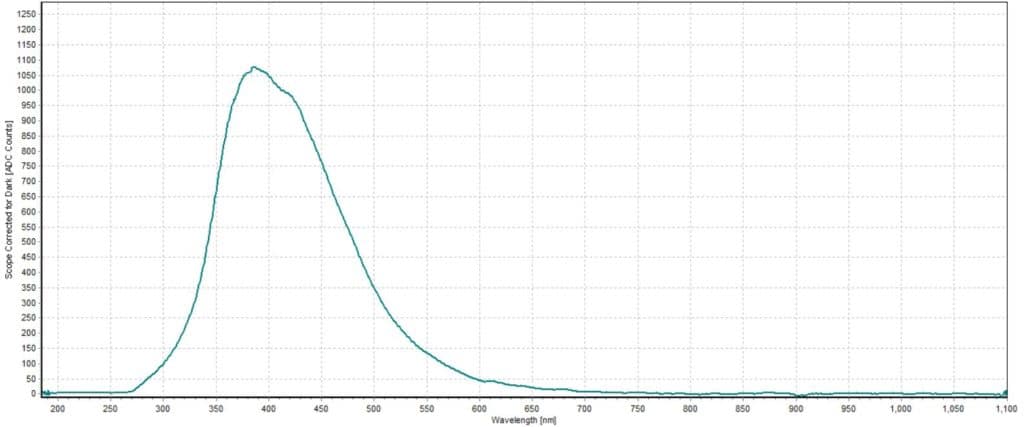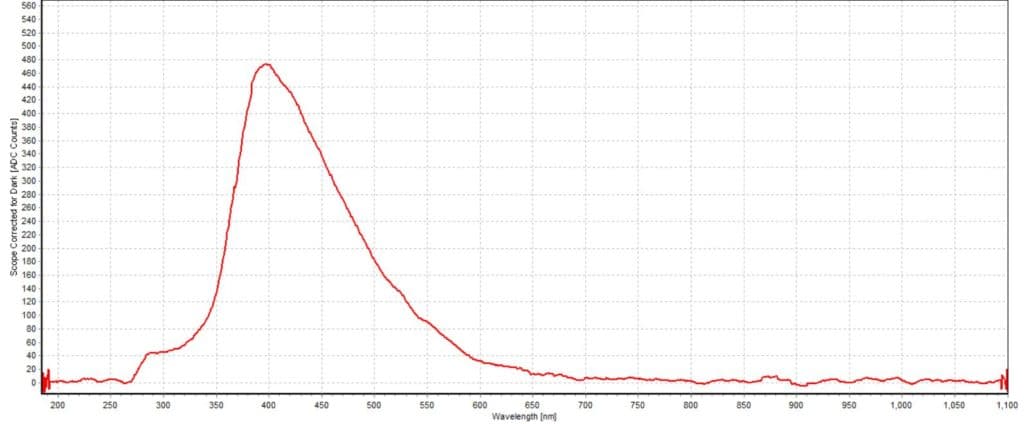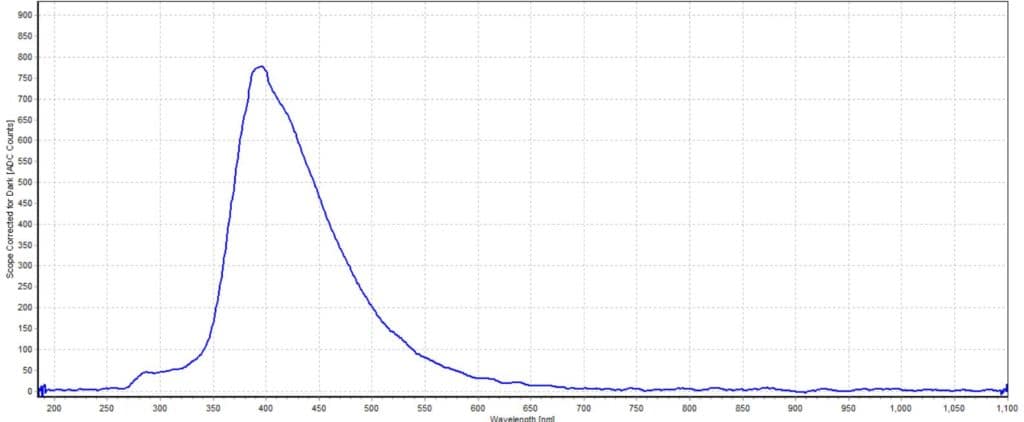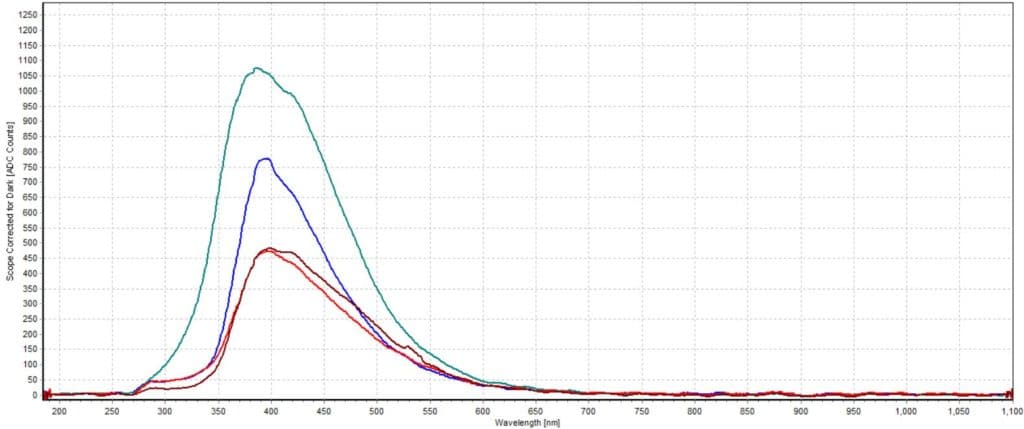Where There’s a Wine, There is a Way!
Theme: Fluorescence
Conducted by: David Ademe (Applications Engineer), Avantes Inc.
Background/Applications:
Fluorescence spectroscopy is a method where a single wavelength/band of light is used to excite a sample that emits a different wavelength of light as a result. Fluorescence has many uses, from medical studies, biological applications, chemistry experiments and sample classification. For example, the type of a sample can be determined based on the emission spectra. This can be used to develop reliable models and analytical methods to differentiate fraud or imitation samples.
The food and beverage industry can use fluorescence spectroscopy to identify purity of samples and distinguish samples from one another. Beverages, such as wine, greatly benefit from fluorescence spectroscopy. The development of new reliable analytical methods, able to detect different types of food and beverages frauds, represents nowadays, a constant need for research and control laboratories. Beside the already acknowledged methods for wine control, new analytical approaches (Raman, fluorescence spectroscopy) in combination with chemometrics, can be successfully applied for wine classification. This experiment will be identifying the fluorescence spectra of four wine samples with Avantes equipment. Referring to the study featured in the journal Nature entitle “Application of fluorescence spectroscopy using classical right-angle technique in white wines classification” in which a classical spectrofluorimeter instrument was used to differentiate wine types of different types of geographical regions, Avantes attempted to excite and measure fluorescence on white wine samples.

Figure 1: Experiment setup
Description of Methodology:
For this experiment, we used an AvaLight-HPLED-285 to excite the sample. The LED has a peak wavelength at 285 nm and a FWHM of 15 nm and spectral power of 0.5 mWatt. The Avalight-HPLED is a compact, low-cost light source designed for fluorescence applications. This high-power version was made for more demanding applications compared to Avantes standard Avalight-Led light sources.
The light source was directly coupled to the CUV-UV/VIS-TC; a temperature-controlled cuvette holder. Direct coupling is preferred over fiber coupling to maximize excitation energy into the sample. The CUV-UV/VIS-TC, is primarily utilized for applications where temperature control is required such as biological applications, however, the fluorescence configuration of this cuvette cell holder is exceptionally well configured to maximize excitation and emission signals. The CUV-UV/VIS-TC is available in fluorescence, absorption, or combined fluorescence/absorption configurations. Application areas enabled by the CUV-UV/VIS-TC series include DNA melting and annealing, protein thermodynamics, fluorophore characterization, enzyme kinetics, and online thermocycling of biological particles.
Because fluorescence emission spectra can be very weak, a fiber bundle was used to couple the cuvette holder emission signal to the spectrometer. The fiber bundle was used to maximize light transport to the spectrometer. A few spectrometer models were tested to gauge the sensitivity requirements of the wine samples and given the weak signals, the AvaSpec-HERO was selected. The AvaSpec-HERO is Avantes highest performance UV/Vis spectrometer which is based on our High-Sensitivity, Compact (HSC), 100mm optical bench offering a NA of 0.13 and a cooled, back-thinned 2-dimensional detector (1024×58 pixels). The HERO features our exclusive AS7010 board, which includes a high-performance Analog to Digital convertor providing for exceptional signal-to-noise performance. The AS7010 also features dual communication options including USB3.0 and Gigabit ethernet.
Test Data and Results:
Analysis:
All four spectra displayed the same general emission peaks. This is to be expected, as all four wine samples are incredibly similar to one another. However, the peak intensities all vary from each other. This demonstrates how each sample has unique spectral properties which allow us to differentiate them from one another.
One aspect of the fluorescence spectra that is key to point out is the relatively low scope counts on the y-axis. This is typical in fluorescence applications, especially in naturally occurring samples. The HERO does an excellent job displaying the spectra, as the integration/scan time in this study was set to 15 seconds. Typically, this results in noisy spectra in most spectrometers, which would prevent us from seeing these fluorescence peaks. The HERO allows us to see these peaks clearly.
Further studies could include developing a chemometric model, allowing us to identify unknown wine samples. While visual examination of the raw spectra indicated all samples were very similar, multivariate analysis could provide for repeatable differentiation.
Conclusion:
The fluorescence emission spectra proves that Avantes instruments provide an excellent method identifying key optical properties in samples, such as food and beverage applications. In particular, the AvaSpec-HERO is an excellent and reliable spectrometer for applications requiring high sensitivity.
Upon evaluation of the spectra collected, the data is consistent with known fluorescence spectra of white wine. Further testing could reveal even more unique spectral properties of wine, depending on the region the wine originated from. Please contact your Avantes sales representative to determine how Avantes instruments can assist your application.
 My Cart
My Cart 




